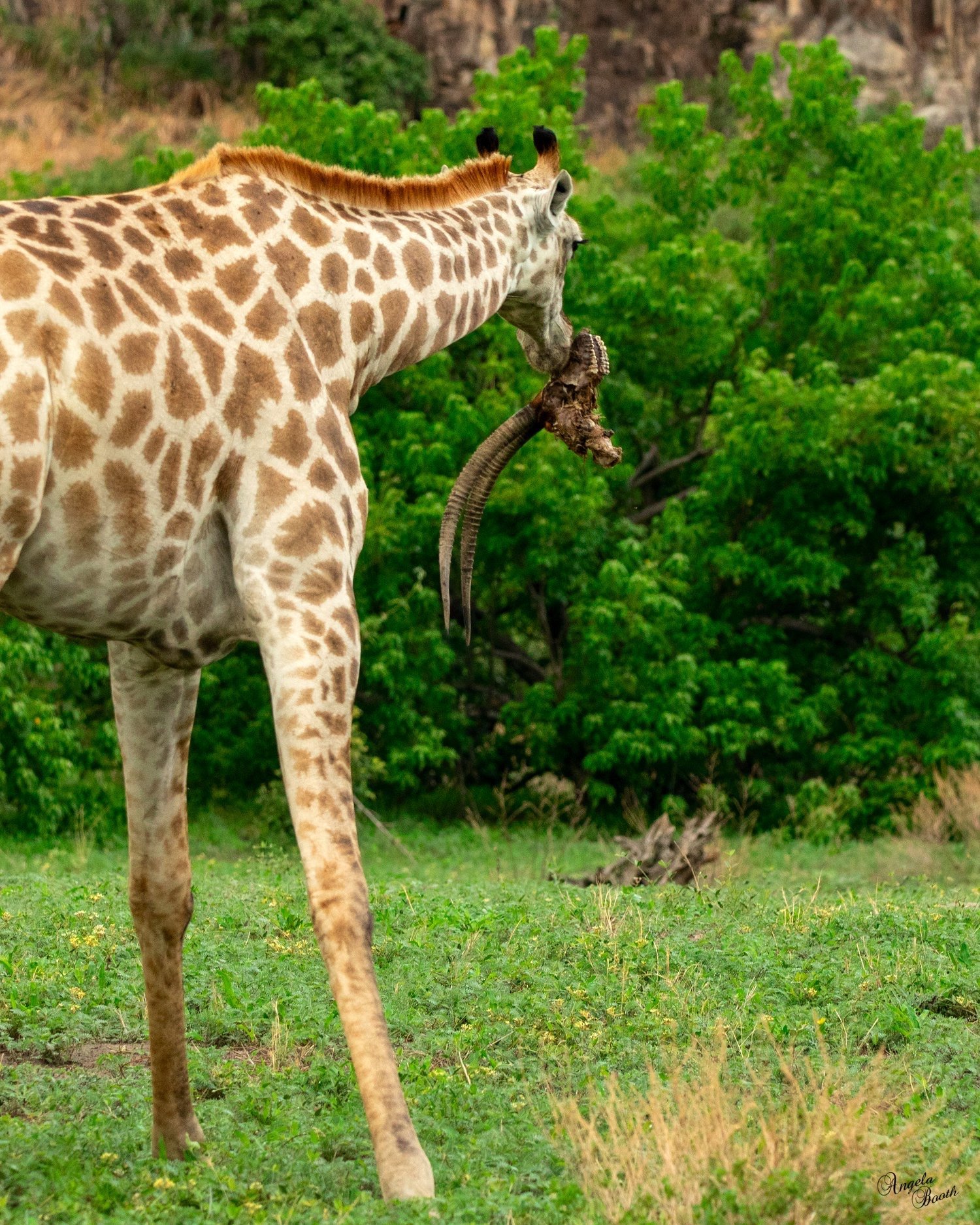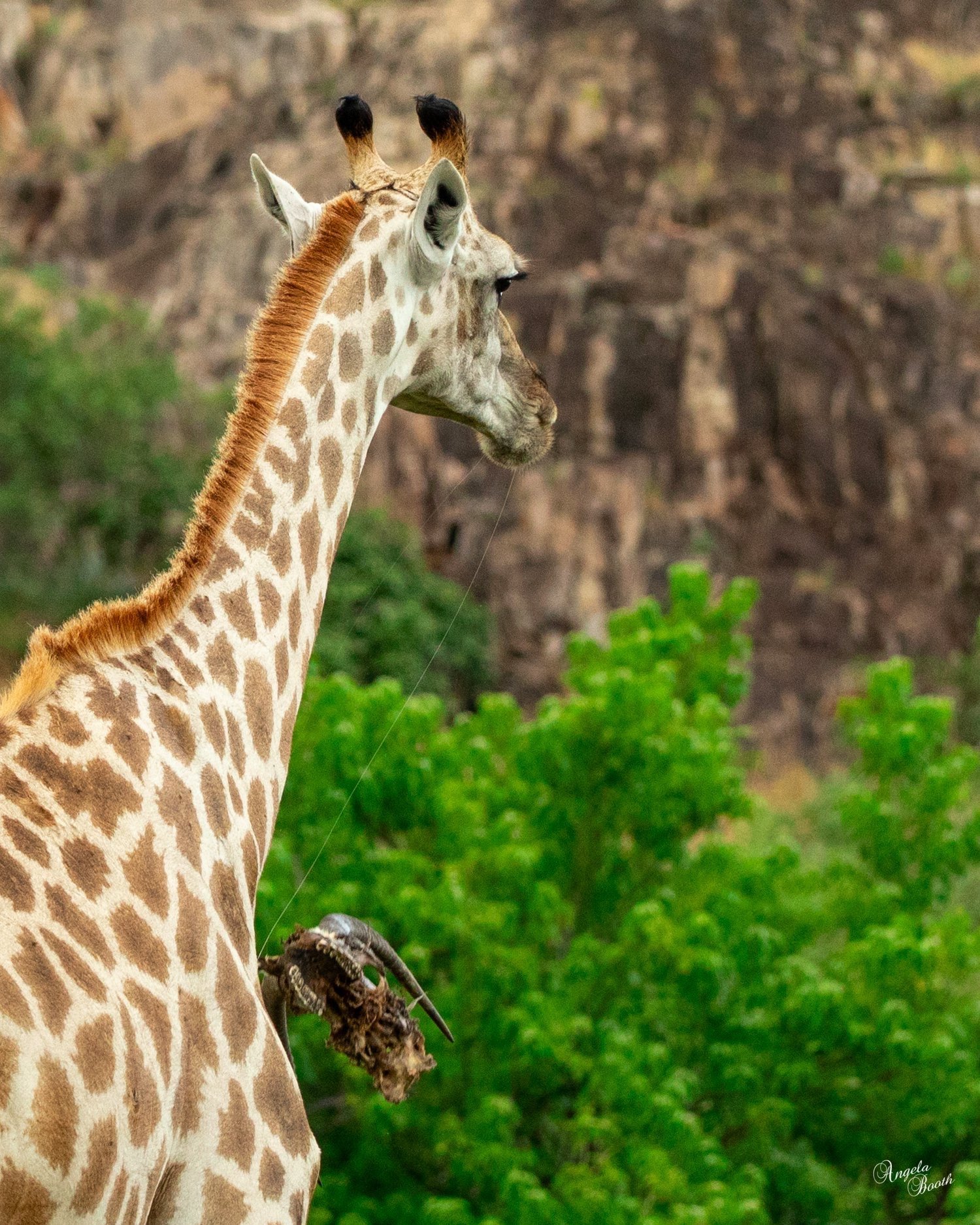The young giraffe and a bony mystery solved
Giraffes and Osteophagy: A Crunch for Calcium
If you've spent time observing giraffes, you've probably noticed their long tongues plucking leaves from acacia trees or stretching high into the canopy for the best browse. But every so often, you might see something unusual—a giraffe gnawing on a bone.
On a recent safari in the Central Serengeti, we spotted a young adult giraffe near our camp, carefully mouthing an old carcass bone. This behavior, known as osteophagy, is surprisingly common among giraffes and many other herbivores. While it might seem odd at first, it serves an important purpose: extracting calcium and other essential minerals that may be lacking in their plant-based diet.
Why Do Giraffes Chew on Bones?
Giraffes have high mineral requirements, particularly for calcium and phosphorus, which are crucial for maintaining their long, weight-bearing bones. While they get most of their nutrients from leaves, certain seasons or specific vegetation types may not provide enough of these minerals. By chewing on old bones, giraffes can supplement their diet and maintain strong skeletal health.
How Do They Do It?
Unlike carnivores, giraffes don't have teeth adapted for crunching bones, so they don’t consume them the way a hyena would. Instead, they use their prehensile lips and strong jaws to manipulate the bone, rubbing and gnawing at it to extract nutrients. You might see them flipping the bone around in their mouths, working at it like a giant mineral lollipop.
Do Other African Herbivores Do This?
Yes! Giraffes aren’t the only plant-eaters known to practice osteophagy. Other animals that have been observed chewing on bones include:
Kudu and Eland – Large antelope often engage in osteophagy, especially in mineral-deficient areas.
Zebras – Occasionally seen nibbling on bones for extra nutrients.
Hippos – While primarily herbivorous, hippos have been documented gnawing on bones and even scavenging meat in extreme cases.
Elephants – More commonly seen eating soil (geophagy) for minerals, but sometimes they also pick up and chew bones.
A Survival Strategy in the Wild
Osteophagy is a fascinating example of how herbivores adapt to their environment. In regions where nutrient-rich plants are scarce, nature finds a way—whether through bone chewing, salt-licking, or even soil consumption (geophagy).



